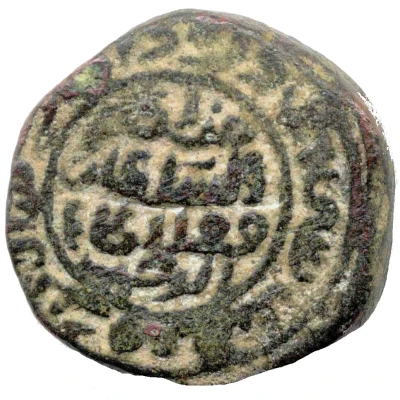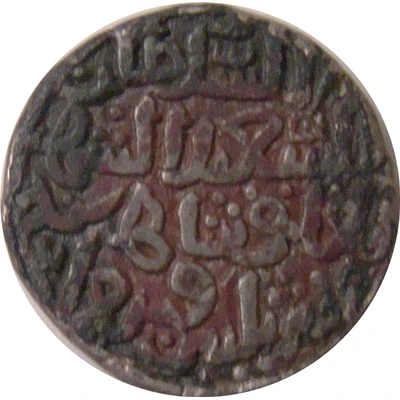


© Parimal (CC BY-NC-SA)
1 Tanka - Muhammad bin Tughluq
| Billon | 8.94 g | 19.1 mm |
| Issuer | Sultanate of Delhi (Indian Sultanates) |
|---|---|
| Sultan | Muhammad bin Tughluq (1325-1351) |
| Type | Standard circulation coin |
| Years | 727-737 (1327-1337) |
| Calendar | Islamic (Hijri) |
| Value | 1 Tanka |
| Currency | Tanka (1206-1526) |
| Composition | Billon |
| Weight | 8.94 g |
| Diameter | 19.1 mm |
| Shape | Round (irregular) |
| Demonetized | Yes |
| Updated | 2024-10-05 |
| Numista | N#60485 |
|---|---|
| Rarity index | 81% |
Reverse
Name of ruler and date
Muhammad bin Tughluq (1325-1351)
Translation: al-sultan al-sa id al-shahid tughluq shah and date written out.
Comment
RULER: MUHAMMAD BIN TUGHLUQ: AH 725-752 / 1325-1351 ADMuhammad Salman Khan Tughluq' (also Sultan Muhammad bin Tughluq, Prince Fakhr Malik, Jauna Khan, Ulugh Khan; died 20 March 1351) was the Turkic Sultan of Delhi through 1324 to 1351. He was the eldest son of Ghiyas-ud-din Tughlaq. He was born in Kotla Tolay Khan in Multan. His wife was the daughter of the raja of Dipalpur. Ghiyas-ud-din Tughlaq sent the young Muhammad to the Deccan to campaign against king Prataparudra of the Kakatiya dynasty whose capital was at Warangal in 1321 and 1323. Muhammad succeeded to the Delhi throne upon his father's death in 1325. Muhammad Tughlaq was a scholar of logic, philosophy, mathematics, astronomy, physical sciences and calligraphy. He was also interested in medicine and was skilled in several languages — Persian, Arabic, Turkish and Sanskrit. Ibn Battuta, the famous traveller from Morocco, was a guest at his court. From his accession to the throne in 1325 until his death in 1351, Muhammad contended with 22 rebellions, pursuing his policies consistently and ruthlessly. It is said that he deliberately killed his father Ghiyasudden Tughlaq to ascend the throne of Delhi, although modern historians do not support this theory. From the chronicles of Barani, we came to know that, on his return from a campaign, Ghiyasuddin was watching the parade of the elephants he got as war booty and then the stage along with the Sultan himself, collapsed. It is noteworthy that the salary of the wazir of Muhammed-Bin-Tughlaq was equal to the income of the then Iraq under the Persian Shah. Elphinstone's just summary of his enigmatic character deserves quotation ; ' It is admitted, on all hands, that he was the most eloquent and accomplished prince of his age. His letters, both in Arabic and Persian, were admired for their elegance long after he had ceased to reign. His memory was extraordinary ; and, besides a thorough knowledge of logic and the philosophy of the Greeks, he was much attached to mathematics and to physical science ; and used himself to attend sick persons for the purpose of watching the symptoms of any extraordinary disease. He was regular in his devotions, abstained from wine, and conformed in his private life to all the moral precepts of his religion. In war he was distinguished for his gallantry and personal activity, so that his contemporaries were justified in esteeming him as one of the wonders of the age. Yet the whole of these splendid talents and accomplishments were given to him in vain : they were accompanied by a perversion of judgement, which, after every allowance for the intoxication of absolute power, leaves us in doubt whether he was not affected by some degree of insanity.
Interesting fact
One interesting fact about the Muhammad bin Tughluq 1 Tanka coin is that it was issued during a time of significant economic and cultural change in the Sultanate of Delhi. Muhammad bin Tughluq was known for his efforts to reform the currency and monetary system, and the introduction of this coin was part of those efforts. The coin was made of billon, a mixture of silver and copper, and weighed 8.94 grams. Despite its relatively small size, the coin played an important role in the economy of the time and is now a valuable collector's item for numismatists.



